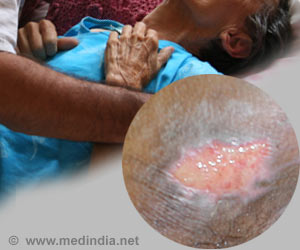Development of the new or worsened pressure ulcer measure was associated with poorer rehabilitation outcomes.

Bedsores, also known as pressure ulcers, cost the U.S. health care system between $9.1 billion and $11.6 billion per year, according to the U.S. Department of Health and Human Services' Agency for Healthcare Research and Quality, the lead federal agency charged with improving the safety and quality of the nation's health care system.
Previous studies have shown an association between the presence of bedsores and a variety of outcomes for patients in acute care hospitals and long-term care facilities. However, the association between pressure injury development and rehabilitation outcomes hasn't been examined previously.
Margaret DiVita, who conducted the research as a doctoral student in epidemiology at UB, is now an associate professor at SUNY Cortland.
Using data from the Uniform Data System for Medical Rehabilitation, she examined the records for nearly 500,000 Medicare patients discharged between January 2013 and September 2014 -- after this mandated measure of quality was implemented.
The study was published in the Archives of Physical Medicine and Rehabilitation.
Advertisement
We found that it was indeed associated with lower quality outcomes: less gain in function during treatment, and lower likelihood of leaving rehab to go to a community setting," said Jo Freudenheim, the paper's senior author and chair of the Department of Epidemiology and Environmental Health in the UB School of Public Health and Health Professions.
Advertisement
How do you measure whether someone is getting good care? In this case we were focused on the inpatient rehab facilities," Freudenheim said.
"We looked at one of the ways that quality is measured as part of the ACA--whether patients get a new pressure ulcer during their stay or, if they have one already, if it gets worse during their stay."
While outcomes were poorer for those with new or worsened pressure ulcers, more than half of these patients were able to be discharged to a community setting.
"A pressure injury prior to admission or greater likelihood of developing worse pressure injury are not appropriate grounds for denial of access to inpatient rehabilitation care," the researchers write.
Compared to the control group, patients with a new or worsened bedsore tended to have a lower change score on the Functional Independence Measure (FIM), a basic indicator of patient disability, and to have, on average, longer rehabilitation stay.
In this study, about 1 percent of patients experienced new or worsened bed sores during their rehabilitation stay.
Source-Eurekalert









